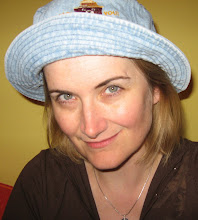
Although I've toured Croatia's Dalmatian coast extensively from Dubrovnik to Senj, until this fall, I'd never been further up to the Kvarner Coast. I figured it would be pretty much like Dalmatia. Rocky, lovely, empty in parts and overrun by tourists in parts (with nothing in-between), and a little too windy for comfort now that Fall is here.
I was right. What I wasn't expecting were all the WWII partisan statues. Maybe there are partisan statues in Dalmatia, but I've never seen them. Here, though, every town and village seems to have their own version. Each is slightly different but most appear to be done by the same artist using the same model, only in a variety of poses, such as:
- Striding forth
- About to throw a hand grenade
- Just after throwing a hand grenade
- Being shot in battle
- Holding a wounded buddy who has just been shot in battle
- Arms raised in victory
All of the statues have the same Partisan-style which is ... a little homoerotic if you ask me, but I'm sure Tito didn't see it that way. They have ripped clothing, with shirts unbuttoned so you can see their fabulous chest muscles, and despite apparently living for years in the forest, they all have absolutely perfect haircuts and clean shaves.
They also all have what I used to call 'WPA-style' hands. These are enormous, squarish hands you see on Depression-era statues in Washington DC that I always thought were inspired by stylized Russian art of the period. Until I met my husband I didn't know hands like this could be found in nature -- on him and many other Serb men.
My husband was much struck by this wealth of partisan statues. He said he thought they used to be in towns all over Croatia, but many were toppled and destroyed during the civil war, in part because so many of the partisans themselves had been of Serb ethnicity. (Which is what the Austrian/Hapsburg empire, who settled these Serb warrior-farmers on the land hundreds of years ago, had in mind, although they were thinking about repelling Turks instead of Nazis.) For my husband, seeing partisan statues still in situ had a great deal of significance. He hoped it meant "We don't hate Serbs so much here."
Compared to the area around Zadar and Gospic where many former Serb lands are still coated in land mines in part so people can't return safely, you can see what a difference a partisan statue's presence might indicate. We hope so anyway, because we plan to return.

6 comments:
"they all have absolutely perfect haircuts and clean shaves" - it was a Party's directive. Stay clean, no mater what. Because, Chetniks didn't care that much about their beards. And Chetniks presented 'old' regime/style/system. So, since Commies wanted to be different, like in their policy, philosophy, they tried being different in hairstyles too. Scissors were a must, for every guerrilla unit :)
There are plenty of partisan statues in Dalmatia, especially out on the islands - though they tend not to be fully 3-dimensional, that is to say they are vertical plinths with bas-relief imagery and engravings of the names of partisans from the village who gave their lives for the cause. The islands in particular had much to be thankful for, as they tended to more easily fall prey to Fascists arriving by boat or submarine.
An interesting post. It is good to read that many partisan statues have survived in the Kvarner region. Whatever we may think of their artistic value, they do represent a moment in Yugoslav history. The nationalist efforts to remove them or damage them across the former Yugoslavia are Orwellian in their nature as they try to control the past to suit their ideology. The partisan monuments were built in the 'style' of social realism, a Stallinist movement. It is worth however keeping in mind that even Western democracies were not totally immune to this 'style' - take for example the memorial to Korean war in Washington DC. More importantly, Tito's regime moved on from social realism very quickly. By the mid 1950's, the communist regime permitted and even in encouraged abstract representation in memorial architecture. This is why the artists such as Bogdan Bogdanovic were able to build innovative memorials across the former Yugoslavia, that were rich in symbolism as opposed to literal representation. Many of Bogdanovic's monuments became internationally acclaimed, most notably the monument in Jasenovac.
This post reminds me of statues, completed in the same style, for the entrance to the Belgrade marriage registration building (Hall of Marriage?)
Flanking the stairs are husband/wife combos. One pair are armed and off to fight for the Motherland, the other toiling in heavy labour. Hmmm, just like a real marriage, fighting and hard work. ;-)
Here links to the pix on my photo album...
http://homepage.mac.com/gbrucechapman/.Pictures/GBC%20Design%20Portfolio/photography/2006_08100022.jpg
http://homepage.mac.com/gbrucechapman/.Pictures/GBC%20Design%20Portfolio/photography/2006_08100023.jpg
OMG - Great photos Gordo! Absolutely the same herioc style - marriage is a battlefield. Interesting the man's chest is exposed in both while the woman is completely covered up.
Thanks Rosemary!
As a bonus, here's a link to "man about to throw a hand grenade" from on the way to the VODA VODA hq.
https://www.me.com/ro/gbrucechapman/Galleries/100007/DSCF3212/web.jpg?ver=12865628650001
Oh, and the big hands thing - my mother in law has an athletic build and hands like baseball gloves.
Post a Comment